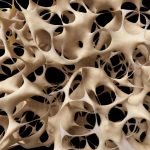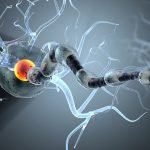Case-Based Naturopathic Curricula: Better in Concept Than Reality?
David M. Brady, ND, DC, CCN, DACBN
Letter to the Editor
I read with great pleasure the article in NDNR’s November 2017 issue, entitled “Rethinking Curriculum: Toward an Integrated Program in Naturopathic Medical Education,” by Drs David Chandross and Fraser Smith. As a university vice-president overseeing a Health Sciences division within a comprehensive university that houses a naturopathic medical program alongside programs in nursing, physician assistant, nutrition, acupuncture/TCM, dental, clinical laboratory sciences, chiropractic, and doctoral health sciences education, I can assure you that I/we have confronted exactly these same issues across virtually all of these professions and healthcare paradigms. The issues of integrated learning, disaggregation of curricula content, development of novel methods of content delivery, and the addition of more “soft skills” to clinical education are not novel to the training of naturopathic physicians. However, it may be particularly challenging – and critical – for the naturopathic profession, since the very premise of our modern naturopathic medicine involves the integration of an amalgam of approaches and sub-disciplines within one very large tent (ie, botanical medicine, clinical nutrition, homeopathy, TCM, Ayurveda, physical medicine, counseling, etc).
At the University of Bridgeport, we are fortunate enough to have renowned Schools of Engineering and Education with well-developed STEM programs in various disciplines, including computer science, math, and biomedical engineering, where many of these same issues are being grappled with. Learning from one another across disciplines, and by virtue of our extensive online educational experience, has been key for us as we set off to modernize the way we educate newer generations of students in all of the STEM and health science fields. It is absolutely necessary that we train students to integrate information and attain competencies that bridge the traditional barriers of any one discipline or profession, as we understand that we are actually training students for jobs and fields that may not even exist yet.
That being said, I wanted to throw up several red flags based on hard-learned lessons and experiences in trying to migrate to the kind of new curriculum and program designs advocated in the extremely thoughtful and well-presented article by Drs Chandross and Smith. Firstly, in my 20-plus-year educational career, I have seen other institutions with professional programs – mainly in allopathic medicine and chiropractic – attempt such changes with somewhat mixed results, and, in a few cases, disastrous ones. The disaggregated and cased-based curriculum design often seems better in concept, and looks better on paper, than it performs in reality. This is particularly true when institutions are dealing with faculty who are unfamiliar with this model and lack the appropriate training in this method of content delivery, with its heavy reliance on seamless integration and collaboration with faculty peers and program administrators. This design also places a great deal of responsibility back on the student regarding their individual outcomes. While some exceptionally motivated, intelligent, and confident students tend to thrive in this model, others can easily be left behind and left wondering why everything they needed to know was not clearly and systematically laid out and spoon-fed to them. These considerations must filter into the admissions process and the selection of applicants suitable for admission into such programs. With enrollment pressures facing the profession’s institutions, it is a potentially very risky proposition for them to consider. This is also a very faculty-intensive model of educational delivery, and therefore very expensive to properly execute. Once again, with enrollment pressures come fiscal pressures for private institutions in healthcare fields such as naturopathic medicine, without large hospitals and healthcare networks supporting their academic programs.
The authors also rightly bring up concerns over how programmatic accreditors may view progressive changes in curriculum design and new and innovative forms of delivery. In my direct experience across professions, the programmatic accreditors have ranged from somewhat resistant to overtly oppositional to the kind of radical changes suggested in the Chandross and Smith article. This puts academic institutions at great risk in making such changes, even if they would like to, as they are clearly unwilling to jeopardize their program’s accreditation status in the process. Remember, while the accreditation process is technically “voluntary,” it is essentially a death sentence for a professional program to lose it.
Finally, from my direct experience in trying to affect positive legislative change regarding naturopathic medicine’s scope of practice, including the granting of some level of prescriptive authority, one of the very first things that legislators and public health regulators ask is, “So, how many credits and courses in pharmacology do NDs take in their training?” Political opponents – mainly state medical associations – also try to cite perceived deficiencies in training or competency, strictly based on comparisons and assessments of professional curricula using these outdated measures, including; numbers of courses, clock hours, and credits in specific subjects. The task of explaining the virtues of the trend in clinical education away from discrete courses and credit loads in each “ology,” and the integration of knowledge and skills acquisition within the context of clinical, case-based learning, systems-based courses, and clinical experiences adds yet another layer of difficulty in emerging successful in these legislative efforts regarding both initial licensure and/or scope of practice expansion for naturopathic doctors.
I wholeheartedly support the concepts that Drs Chandross and Smith put forth in their article, and I aspire to continue to affect such change in the training of the modern ND. I also believe it is critically important that we support the further development and funding of primary care and other specialty post-doctoral residency experiences as routine elements in ND training and licensure. However, I also wanted to acknowledge the significant challenges, as well as potential perils and pitfalls that will be in play as we chart this course.
Sincerely,
Dr David M. Brady
University of Bridgeport









